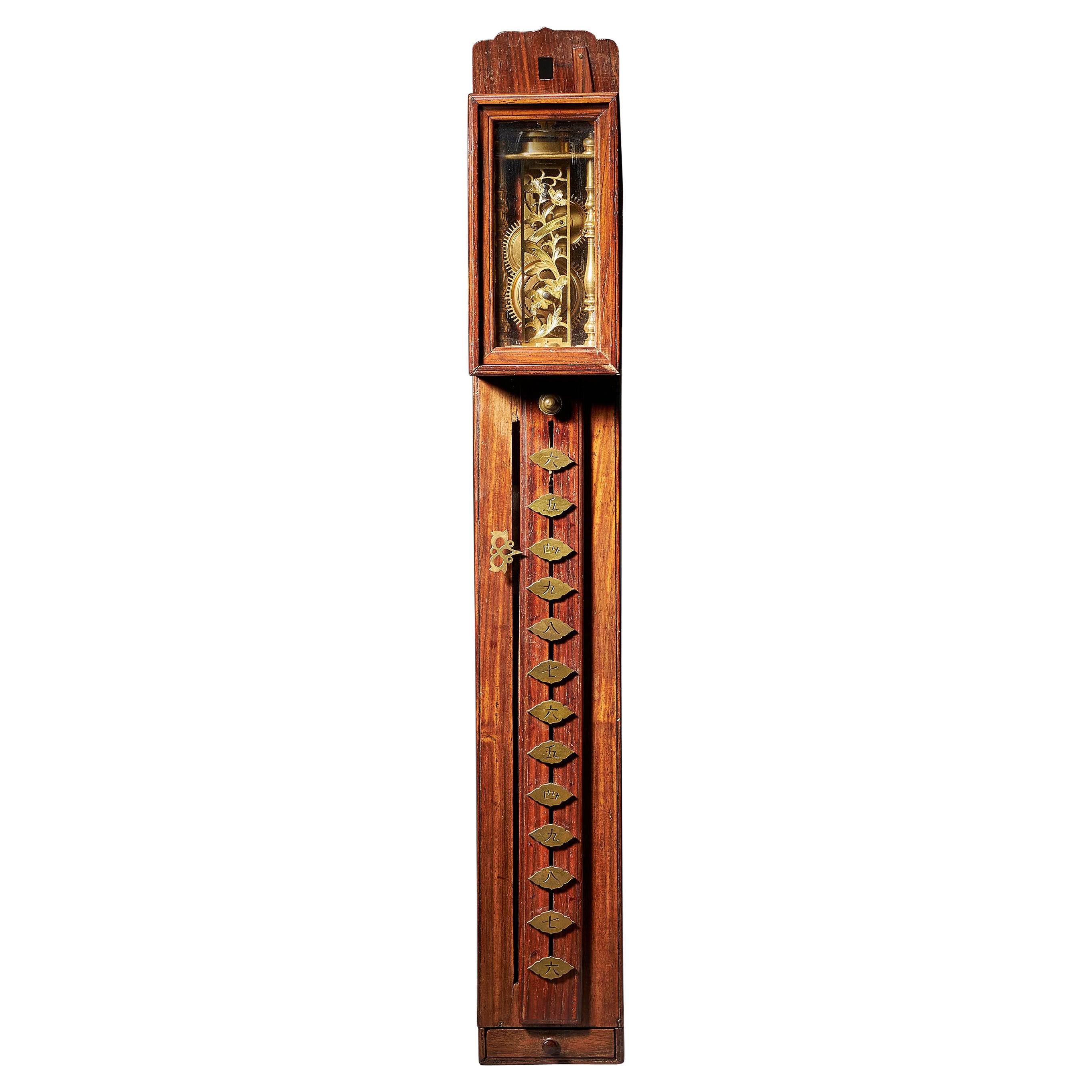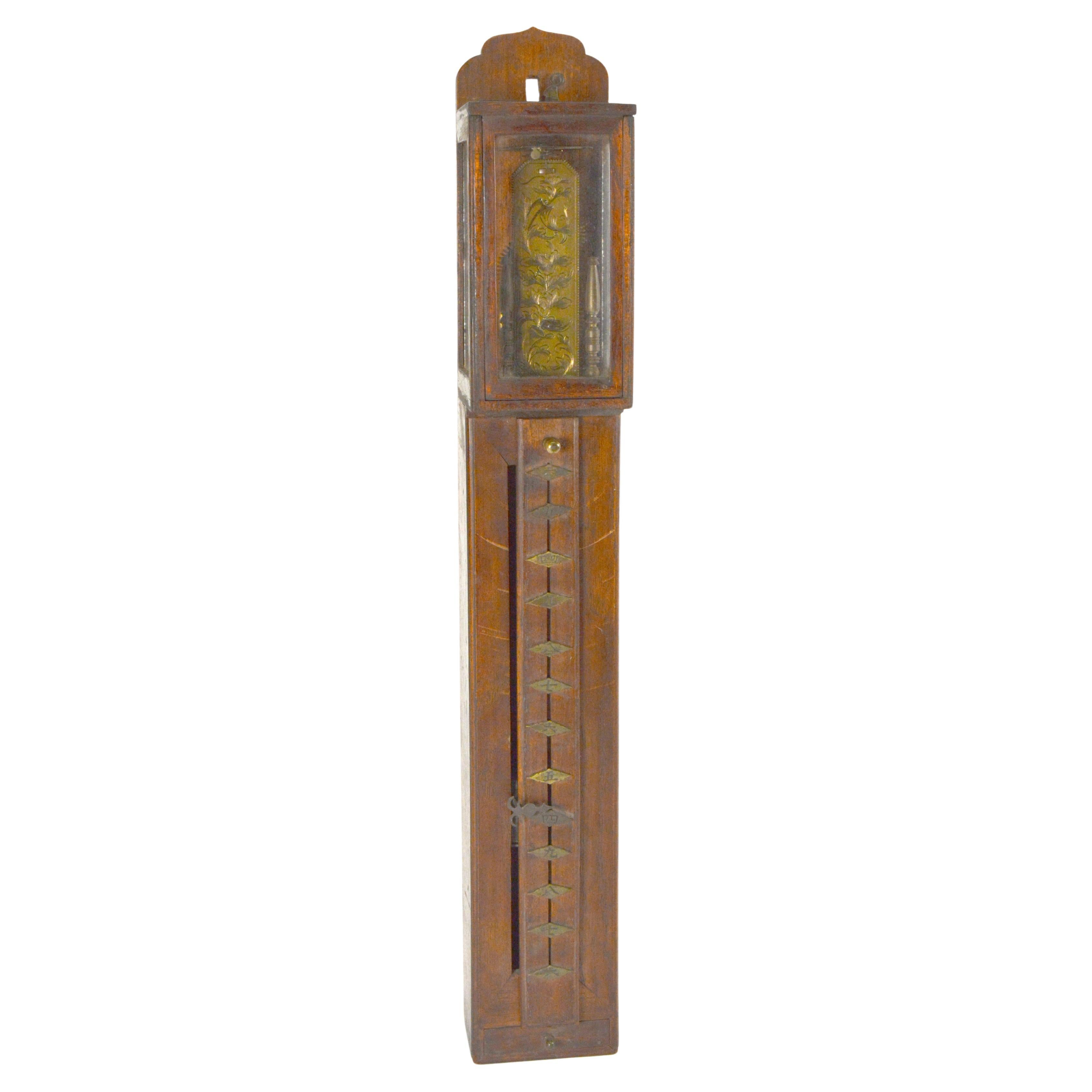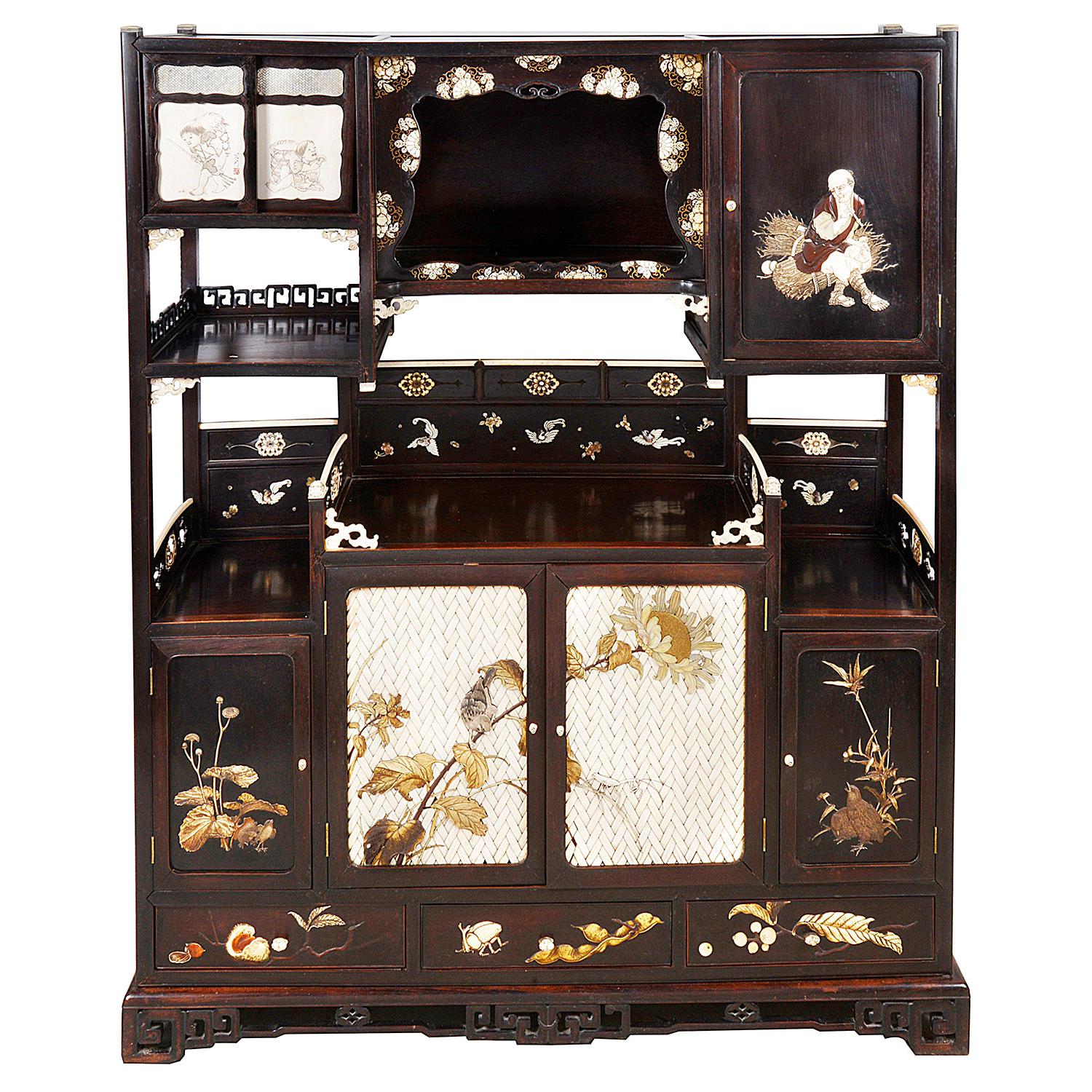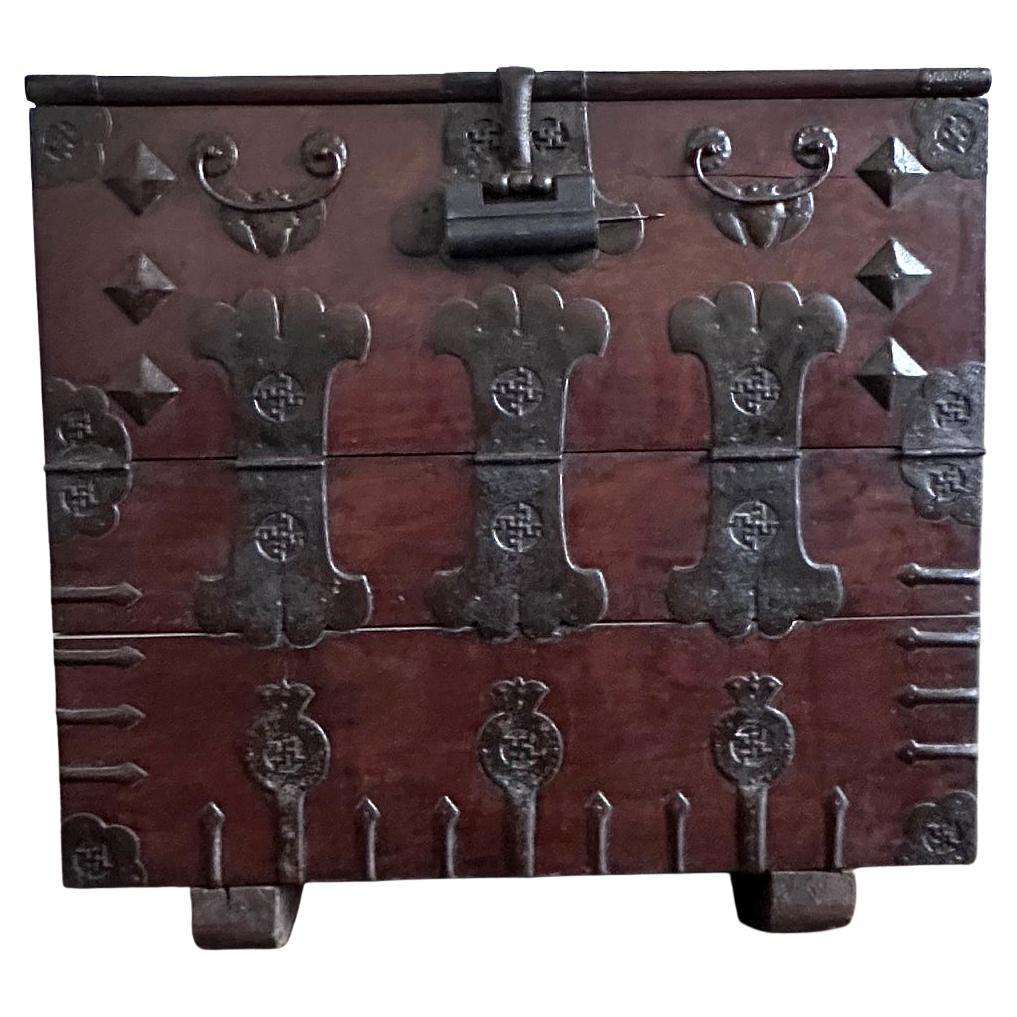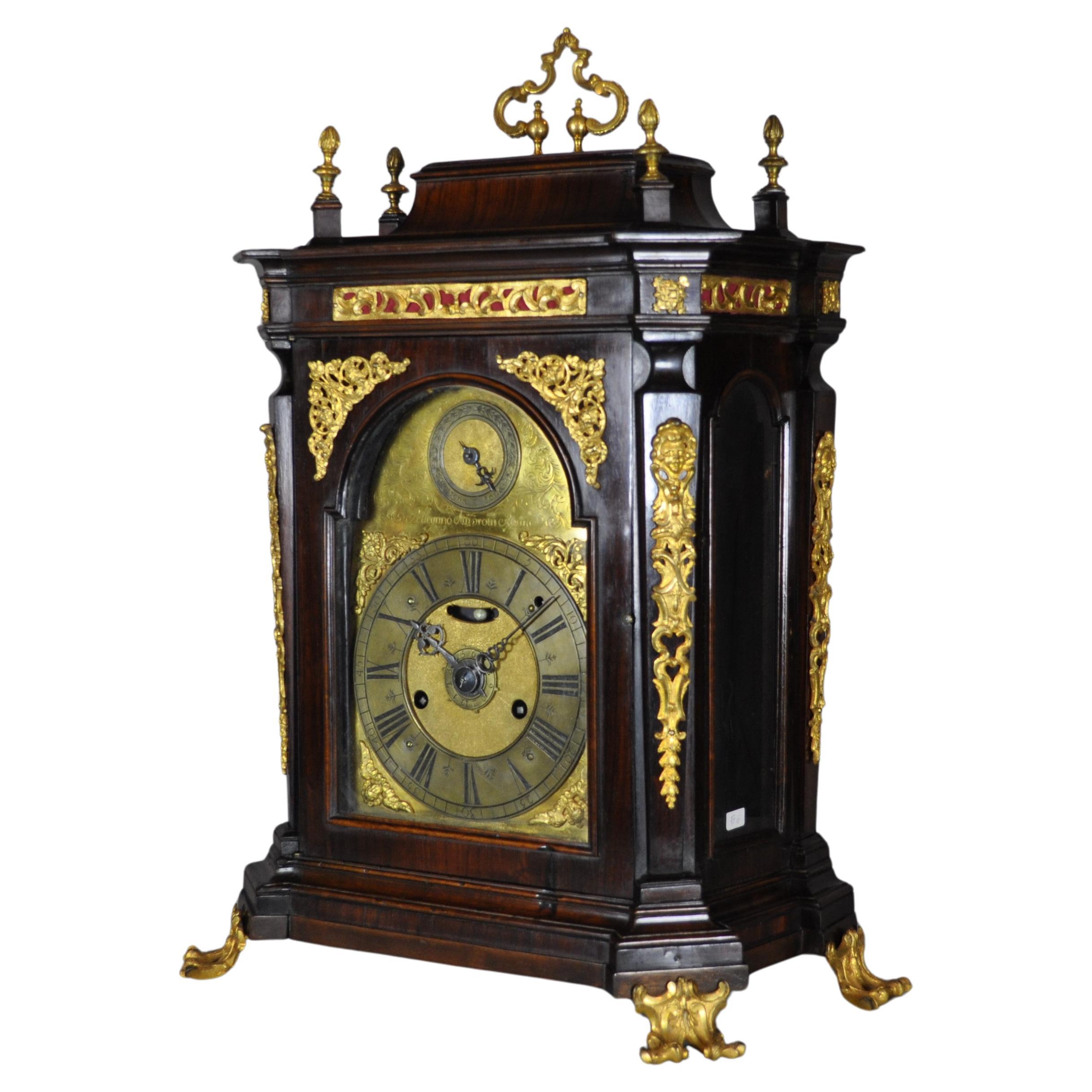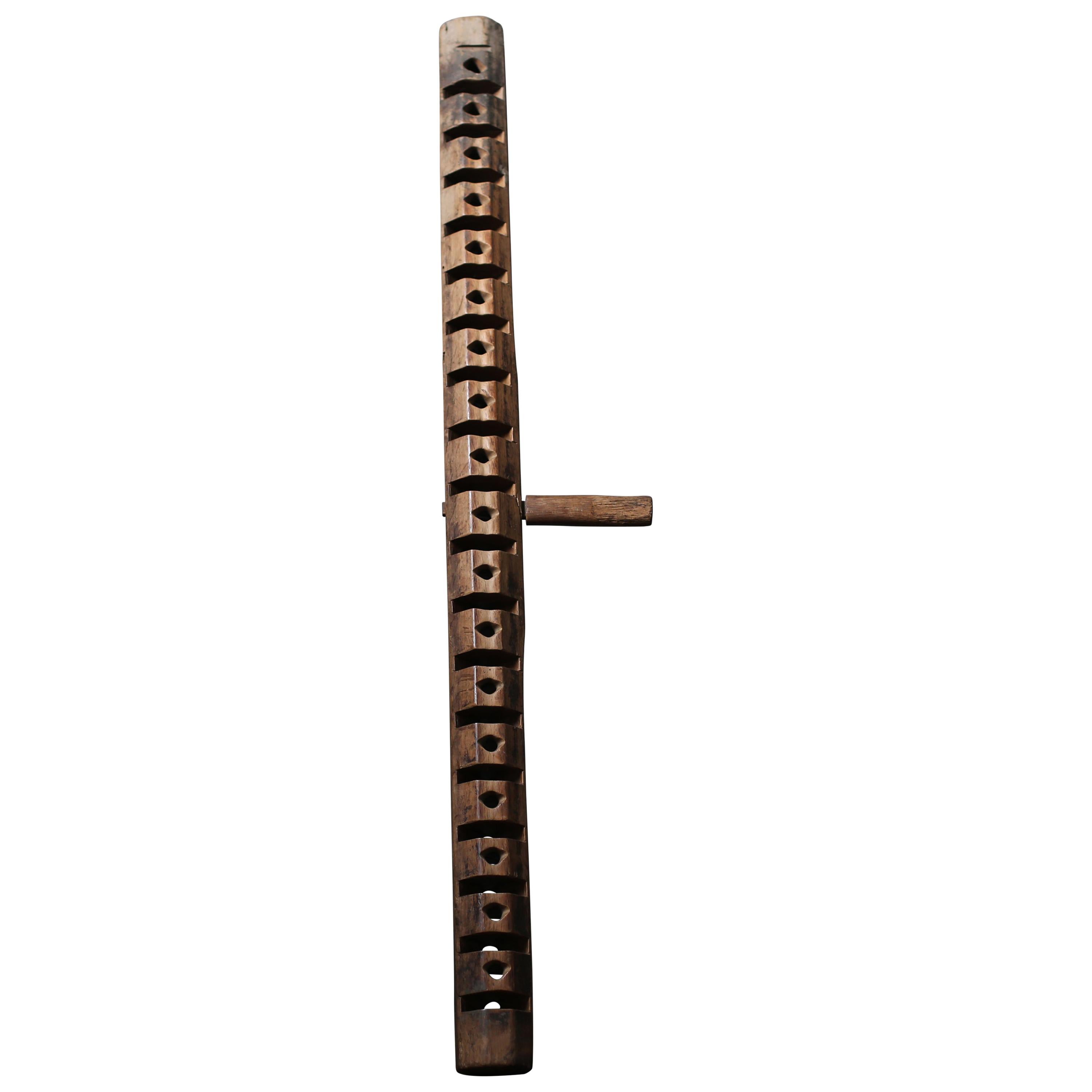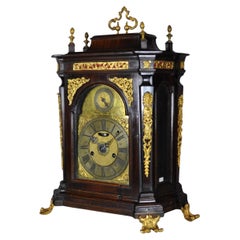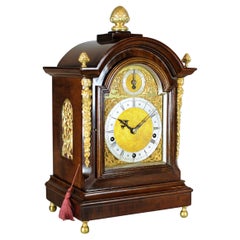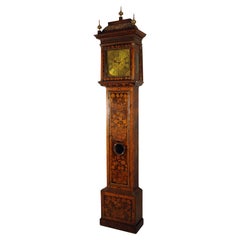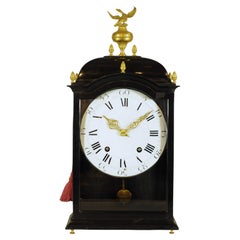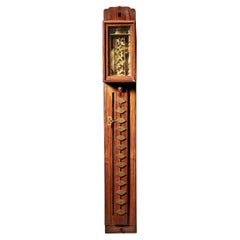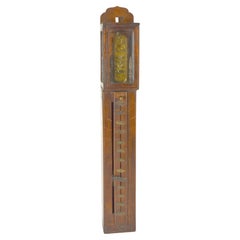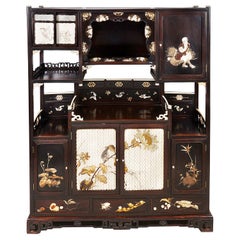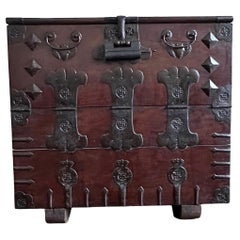Items Similar to JAPANESE pendulum clock "SHAKU DOKEI" WOOD "SHITAN" chime in the pendulum, late Edo
Video Loading
Want more images or videos?
Request additional images or videos from the seller
1 of 16
JAPANESE pendulum clock "SHAKU DOKEI" WOOD "SHITAN" chime in the pendulum, late Edo
$13,055.36
£9,674.74
€10,900
CA$17,823.05
A$19,827.42
CHF 10,393.78
MX$242,286.18
NOK 132,351.82
SEK 124,590.93
DKK 82,991.64
Shipping
Retrieving quote...The 1stDibs Promise:
Authenticity Guarantee,
Money-Back Guarantee,
24-Hour Cancellation
About the Item
JAPANESE WALL CLOCK "SHAKU DOKEI" WITH "SHITAN" WOODEN CASE AND CHIMING SYSTEM ON WEIGHT.
Hanging pendulum with "shitan" (rosewood) wooden case, at the top removable door and glassed in front to allow access to the movement and winding hole. In the central part we find the removable wooden slat screwed to the front by two gold-plated brass pins, to which the hour and half-hour tiles are placed. At the lowest part we find the small drawer containing the charging key.
The wooden "dial"-pillar-has thirteen movable tiles, called "toki," made of engraved golden brass for reading the hours. Japanese characters on the toki depict numbers. The time is indicated by a brass hand that slides vertically.
The gilded bronze movement is fixed on the wooden "shitan" panel behind. The pilars are finely turned, and the movement wheels are fixed on a finely pierced and engraved plate with floral motifs. The verge escapement with monometallic balance wheel is driven by a gilded bronze weight with multiple functions, in addition to running the watch it also acts as a striking mechanism by having the partitora wheel and bell inside it as well as its own winding hole.
Late Edo period, first half of the 19th century, ca. 1820.
Dimensions: height 38 cm, width 6 cm, 5 cm depth.
Condition: very good overall condition. the removable, glazed door on the front has been lost. Fnctioning movement.
Notes:
Shaku-dokei clocks were mainly made of Shitan wood. The Shaku-dokei principle was a unique Japanese invention that was implemented throughout the Edo period.
Early examples of Japanese clocks used the rod and "foliot" escapement, followed by the pendulum and, in turn, the balance wheel. The principle is the same in all the various types of shaku-dokei. The method of measuring "hours" by dropping the descending weight from a "Kake-dokei" on the surface of the wall behind the Wadokei led to the construction of specially made small Wadokei with integral hour markers called Shaku-dokei. The name is derived from the linear unit of measurement of the dial, which was one "shaku" high (equal to about 300 mm or 12 inches). Japanese time measurement was very different from measurement in the Western world. Instead of a fixed value for an hour, the length of an hour in Japan, called toki, is variable depending on the length of the day and night. Day and night are both divided into six toki, which lasts from sunrise to sunset and from sunset to sunrise. In summer the days are longer than the nights and consequently a day toki last longer than a night toki. In winter it is the other way around. This is why Japanese clocks have sliding chapters to adjust the length of a toki. The hour numbers range from nine to four, the latter being noon. Japanese clocks indicate how many hours are yet to come, while European clocks indicate how many hours have passed. In Japan the digit 9 was sacred. Each toki, twelve in total, also had its zodiac sign, which was sometimes indicated on a ring around the time band.
- Dimensions:Height: 14.97 in (38 cm)Width: 2.37 in (6 cm)Depth: 1.97 in (5 cm)
- Style:Edo (Of the Period)
- Materials and Techniques:Brass,Palisander
- Place of Origin:
- Period:
- Date of Manufacture:Circa 1820
- Condition:Wear consistent with age and use. Minor losses.
- Seller Location:Milano, IT
- Reference Number:1stDibs: LU9903241259782
About the Seller
No Reviews Yet
Vetted Professional Seller
Every seller passes strict standards for authenticity and reliability
Established in 1985
1stDibs seller since 2024
- ShippingRetrieving quote...Shipping from: Milano, Italy
- Return Policy
Authenticity Guarantee
In the unlikely event there’s an issue with an item’s authenticity, contact us within 1 year for a full refund. DetailsMoney-Back Guarantee
If your item is not as described, is damaged in transit, or does not arrive, contact us within 7 days for a full refund. Details24-Hour Cancellation
You have a 24-hour grace period in which to reconsider your purchase, with no questions asked.Vetted Professional Sellers
Our world-class sellers must adhere to strict standards for service and quality, maintaining the integrity of our listings.Price-Match Guarantee
If you find that a seller listed the same item for a lower price elsewhere, we’ll match it.Trusted Global Delivery
Our best-in-class carrier network provides specialized shipping options worldwide, including custom delivery.More From This Seller
View AllAntique Italian walnut clock, Pellegrino Amorotti, mid-18th century
Located in Milano, IT
Rare Roman table clock.
Walnut wood case and finely crafted gilt bronze friezes.
Gold-plated brass dial with time band and central dial for alarm clock. Dial "at 12 o'clock" for "ri...
Category
Antique Mid-18th Century Italian Louis XV Mantel Clocks
Materials
Bronze
Antique ENGLISH "BRACKET" pendulum clock Victorian era, chime hours and quarter gongs
Located in Milano, IT
ENGLISH "BRACKET" CLOCK
Mahogany veneered case with gilt bronze decorations, friezes, pinnacles, handles and feet.
Dial: gilt brass display with pierced and engraved friezes in gilt...
Category
Antique Late 19th Century English High Victorian Mantel Clocks
Materials
Bronze
English column clock hour and half-hour chime. FABIAN ROBIN London. 18th 18th Century
Located in Milano, IT
Antique English column clock with chime.
Long-stemmed case inlaid with fine woods in plant and bird motifs. Three beautiful metal pinnacles decorate the cymatium. Original glazing.
...
Category
Antique Early 18th Century Grandfather Clocks and Longcase Clocks
Materials
Metal
Antique Swiss wooden clock with gilt eagle, chime, 1750s era.
Located in Milano, IT
ANTIQUE SWISS GRANDFATHER CLOCK WITH CHIME
Ebonized wood case with gilded bronze eagle on top and gilded bronze pinnacles. Door with glass on the front to access the charging holes. ...
Category
Antique Mid-18th Century Swiss Louis XV Mantel Clocks
Materials
Bronze
Rara pendola francese detta “la ruche”, arnia api, su modello di Claude Galle
By Claude Galle
Located in Milano, IT
Bella e rara pendola francese detta “la ruche”, su modello di Claude Galle (nel 1786 già Maître-Fondeur)
Cassa in bronzo dorato e brunito rappresentante un'antica arnia di api in pag...
Category
Antique Early 19th Century French Empire Mantel Clocks
Materials
Bronze
Importante monumentale pendola Foresta Nera con calendario, suoneria e 19 automi
Located in Milano, IT
Importante e monumentale pendola della Foresta Nera, unica nel suo genere, con calendario, suoneria delle ore e dei quarti e 19 automi che compiono 24 movimenti.
Cassa in legno lacc...
Category
Antique Late 18th Century German Neoclassical Revival Grandfather Clocks...
Materials
Brass, Iron
You May Also Like
Late Edo Period 19th Century Japanese Pillar Clock, Shaku-Dokei, C. 1820
Located in Oxfordshire, United Kingdom
Elegant Japanese pillar clock, 'SHAKU-DOKEI', c. 1820
The very fine 30-hour, weight-driven movement is constructed between bars and consists ...
Category
Antique Early 19th Century Japanese Edo Wall Clocks
Materials
Hardwood
Antique 19th c. Japanese Shaku Dokei Hanging Stick Pillar Wall Clock
Located in Danville, CA
Antique 19th c. Japanese Shaku Dokei Hanging Stick Pillar Wall Clock
Here I'm offering a very old Japanese stick clock or Shaku-Dokei. The wood case has a...
Category
Antique Late 19th Century Japanese Meiji Wall Clocks
Materials
Brass
Rare and Important Japanese Meiji Period Shadona, circa 1890
Located in Brighton, Sussex
A Japanese hardwood shodana with inlaid and lacquer decoration, Meiji Period 1868-1912, by Shoso Kosen, bearing two character signature and red seal, with various shelves, cupboards,...
Category
Antique Late 19th Century Japanese Furniture
Materials
Hardwood, Lacquer
Antique Korean Bandaji from Jeju Do Island
Located in Atlanta, GA
An antique Korean Bandaji from Jeju Do (Jeju Island) circa 19th century. Made from pine planks and stained in a dark reddish color, the drop front cabinet showcases iconic character...
Category
Antique 19th Century Korean Other Furniture
Materials
Iron
Japanese Antique Wooden Object
Located in Sammu-shi, Chiba
An old tool for making textiles in Japan.
It's a very rare object.
The light and shadow that pass through the even holes are very beautiful.
A nice art ob...
Category
Antique Late 19th Century Asian Meiji Antiquities
Materials
Oak
Early 19th Century English Japanned Grandfather Clock
Located in Dublin 8, IE
Early 19th Century English Japanned grandfather clock by Robert Woollan of Glastonbury, with an engraved silver and brass face and silver chapter ring. Boasting an intricate hand pai...
Category
Antique Early 19th Century Grandfather Clocks and Longcase Clocks
Materials
Silver, Brass
More Ways To Browse
Le Nove
Shaku Dokei
Chinese Coconut
Gandharan Art
Han Dynasty Horse Heads
Turquoise Monkey
Ancient Bactrian
Chinese Fat Lady
Gandhara Head
Han Dynasty Dog
Neolithic Amphora
Chinese Doll House
Gandhara Buddha
Japanese Pillow Vase
Tibetan Conch Shell
Vintage Indigo Kimono
Northern Wei Dynasty Painted Pottery
Chinese Zodiac Figures
